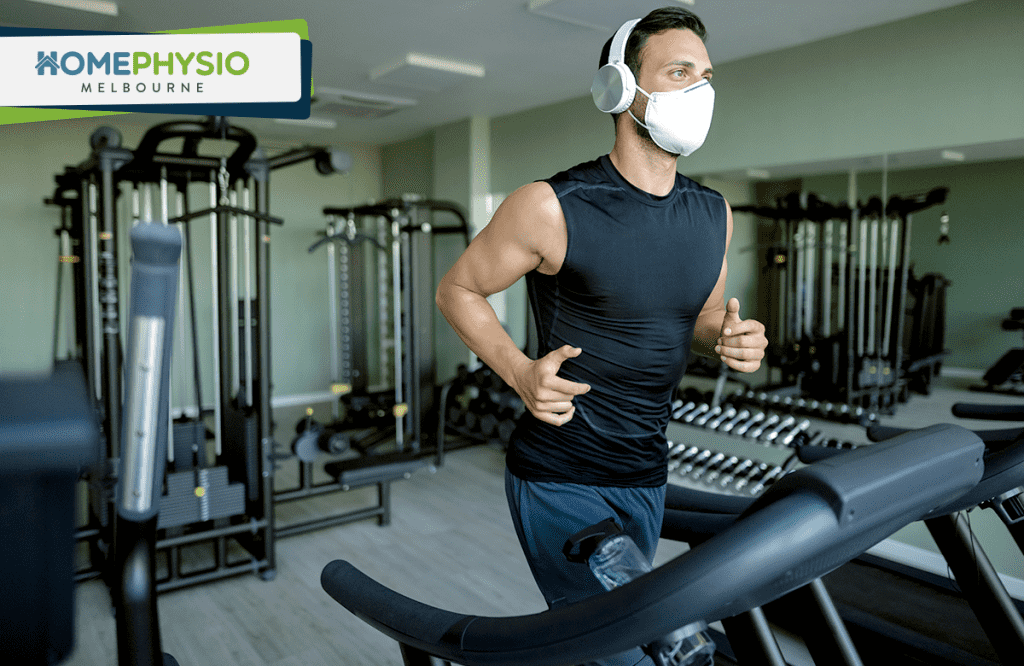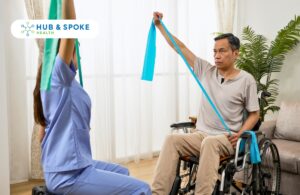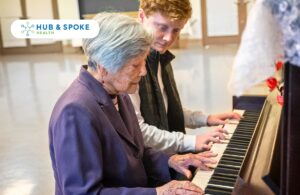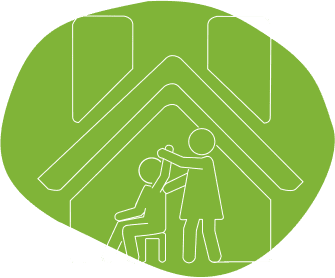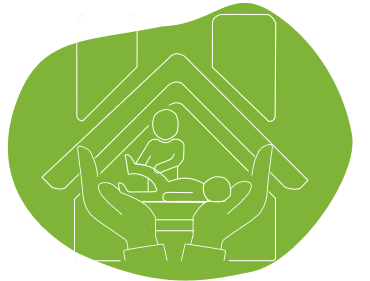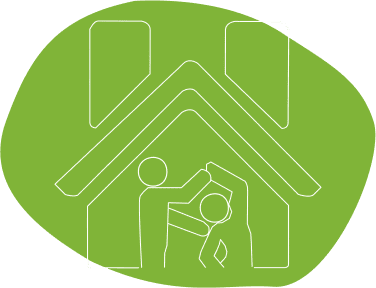Some people recover quickly, while others struggle to exercise for several weeks or months after COVID-19 infection.
Everyone’s experience is unique, and thus everyone’s return to exercise will be unique as well. When it comes to this, there are no hard and fast rules.
While everyone’s recovery from COVID is unique, the most important thing is to listen to your body, start with gentle exercises and make small improvements in exercise capacity.
What is long COVID?
Long COVID refers to people who continue to experience symptoms after the virus has left their bodies. Fatigue, sore throats, a persistent cough, muscle and joint aches and pains, shortness of breath, light-headedness, nausea, unrefreshing sleep and sensitivity to light or noise are symptoms.
People with long COVID may experience fatigue post-exertional symptom exacerbation (PESE), with post-exertional symptom exacerbation impairing their ability to function in daily life and work.
These symptoms can significantly impact your ability to live a normal life, spend time with your family, return to social activities, work, and exercise. If you experience these symptoms regularly and for more than four to six weeks, you should seek medical attention. Trying to push through can aggravate your condition.
The less known side-effects of long COVID
Long-term COVID can cause organ damage, including the kidneys, heart, liver, lungs, spleen and pancreas.
People with long COVID managed in the community for initial COVID-19 infection have a higher than expected burden of myocardial injury. Persistent cardiac injury is also, unfortunately, a vital component of long COVID.
A significant number of Covid-19 survivors also have cognitive difficulties, brain fog and damage to the cells in the nervous system that support neurons physically and nutritionally.
Fatigue versus tiredness
Fatigue is not synonymous with tiredness. Tiredness is caused by a long day and is frequently or always relieved by sleep. Fatigue is not alleviated by sleep, cannot be pushed through and is commonly exacerbated by daily activity.
Pacing your day is essential for managing fatigue. This entails ensuring that you get enough rest to recover from your activities throughout the day. It would help if you also began with small volumes of regular exercise to repeat day after day. Once you’ve established this exercise routine, you can gradually increase your activity to start living a full life.
In addition, it is critical to maintain a healthy diet, a regular sleep routine, manage stress, and engage in sustainable exercise so that movement can be repeated every day without limiting you. If you experience abnormal fatigue after exercise or believe you have long COVID, you should contact your medical team for assistance.
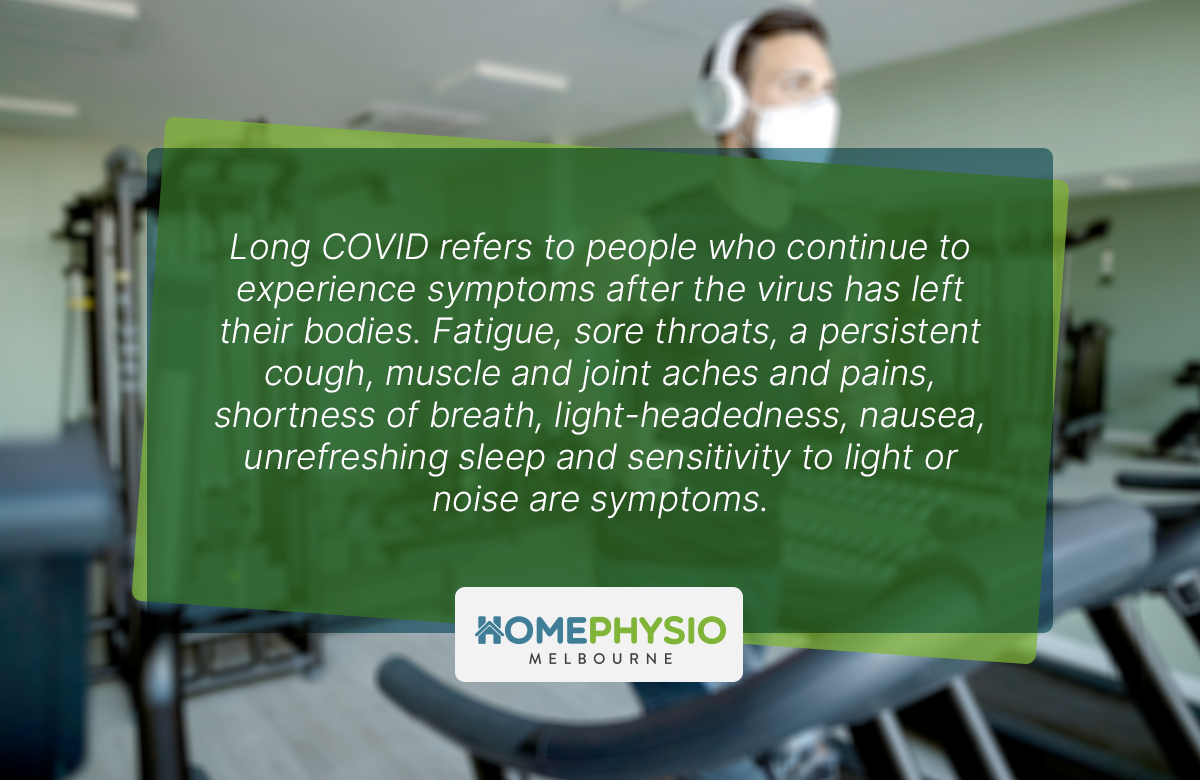
Post-exertional symptom exacerbation
Persistent exertional intolerance has been linked to decreased systemic oxygen extraction, this is how much oxygen gets to the muscles, and abnormal breathing responses to exercise also referred to as ventilatory inefficiency.
Exercise intolerance in those with long COVID does not result from deconditioning. There are marked differences in heart rate, altered gas exchange (low-end tidal CO2), and circulatory impairment responses to exercise in people with long COVID.
In terms of vascular effects, chronic fatigue associated with long COVID is comparable to transient fatigue caused by high-intensity exercise. However, unlike long COVID fatigue, fatigue caused by high-intensity exercise is fully reversible after 1–3 hours of rest.
The likelihood of impaired exercise capacity has also been linked to microvascular or endothelial dysfunction, with elevated biological clotting markers, VWF(Ag):ADAMTS13 ratios. This results in a fourfold increase in the likelihood of impaired exercise capacity.
Despite not fully understanding exertional intolerance, we recognise its health-related impacts.
Common symptoms of post-COVID exercise fatigue
- Joint stiffness
- Breathlessness
- Muscle weakness
- Muscle aches
- Fatigue or extreme exhaustion
- Joint pain
- Chest pain
- Lack of energy
- Phlegm – this can vary depending on how the virus affects you
Physiotherapy treatment for post-COVID exercise fatigue
Exercise can exacerbate post-COVID symptoms such as fatigue and lightheadedness in long COVID patients.
Physiotherapy guidelines advise caution with exercise. Physical activity is a common trigger for symptom exacerbation and relapse in people with long COVID. Exercise is therefore not a safe rehabilitation intervention for treating fatigue in people experiencing post-exercise symptom exacerbation.
Athletes recovering from COVID-19 should be screened for potential cardiac involvement. Before exercise is considered a rehabilitation intervention, appropriate risk stratification should be performed to assess and continuously monitor for likely cardiac symptoms and impairments.
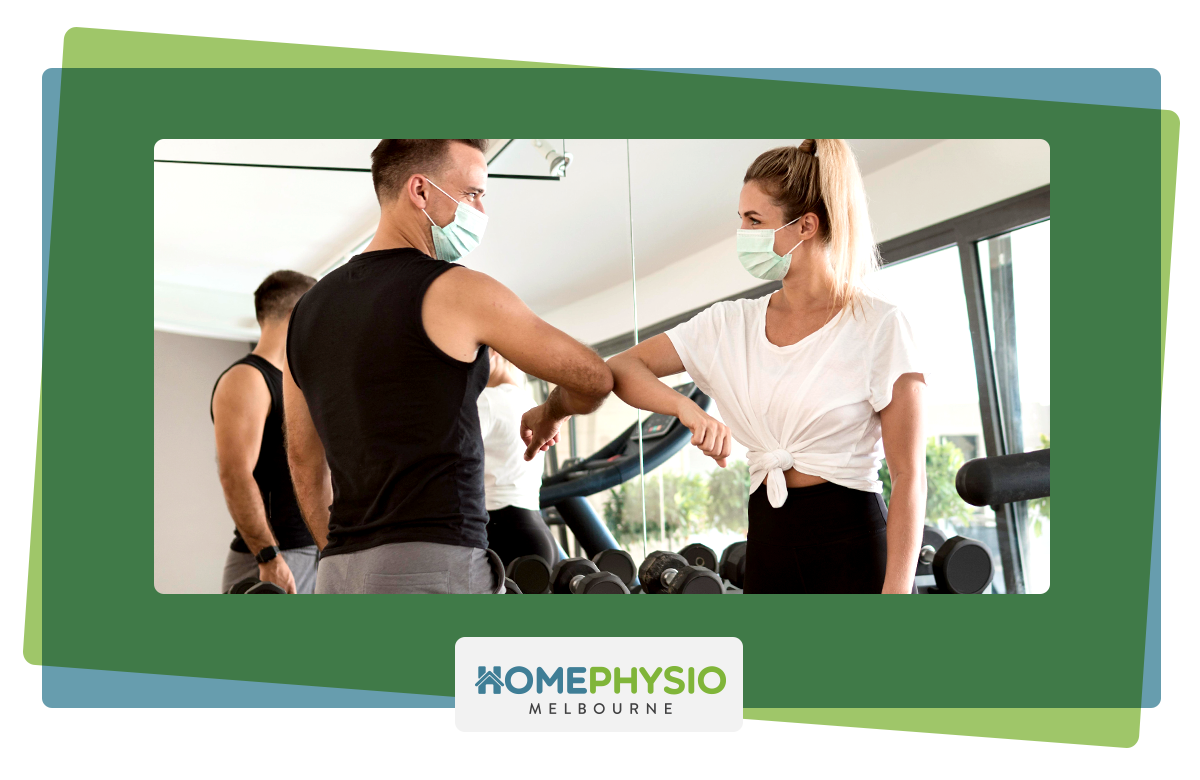
Final thoughts
If you need assistance starting an exercise program after COVID or experiencing long COVID, an exercise physiologist can assist you in safely returning to movement. They will assess your ability and prescribe exercises based on your specific needs.
An exercise physiologist can also assist you in gradually increasing your training load while minimising the risk of additional fatigue or a flare in COVID-19 symptoms.
You should probably start slowly, take breaks, and set different fitness goals than you did before getting COVID-19.
Book an appointment today, and our team of experts will lead you down the best treatment path based on a comprehensive assessment.
Author
-

Hub & Spoke is a unique Allied Health service that delivers the latest in therapies and treatments to you both in-home or at work to make health care accessible to everyone.
View all posts



